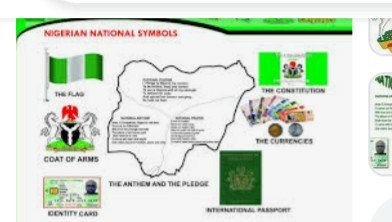First Term Lesson Note for Week Six
Class : Primary Four
Subject : Social Studies
Topic : Similarities and differences in Culture
Duration : 40 Minutes
Period : Single Period
Reference Book :
- Social Studies for Primary Schools, Book 4.
- Lagos State Unified schemes of work for Upper Primary, (Primary 4 – 6).
- Online Resources
Instructional Material : Chart showing similarities and differences in culture.
Learning Objectives : By the end of the lesson learners will be able to :
i. Identify and explain the similarities in culture.
ii. Identify the differences in culture and give examples.
CONTENT :
SIMILARITIES IN CULTURE
1 We all believe in God.
2 We all believe that we should respect our elders.
3 Nigerians believe that marriage is good. That is why we conduct marriage ceremonies.
4 Many ethnic groups love and eat the same kind of food like yams, vegetables, beans, groundnuts, and palm oil.
5 All ethnic groups believe that people should work hard.
6 In our culture, stealing is seen as something very bad, and thieves are punished severely.
7 We believe that people’s names should mean something specific.
8 We love music and sports.
9 We hate wickedness, war and violence.
WHY WE HAVE DIFFERENT CUSTOMS
Customs are beliefs and traditions of a particular group of people. are beliefs and traditions of a particular group of people.
1. People come from different places. For example, the Yoruba people of Nigeria are said to have come from Saudi Arabia. They initially settled at Ile Ife and later spread to other places like Abeokuta, Ondo, and Lagos. The Hausa people are said to have come from the central and northern parts of Africa, especially the Sudan area. The Igbo people are said to have come from central Africa through Cameroun. These groups have different customs and traditions because they originated from different forefathers.
2. People live in different areas. For instance, the Igbo live in the eastern part of the country. The Yoruba live in the west and the Hausa in the north. The different places where people live cause differences in their customs, such as the various types of food they eat, and the way they prepare their food. It also affects the way they think, their modes of dressing, their weapons of war and their cooking utensils, among other things.
3. Also, people have different cultures because of the kind of people they interact with and the kind of people who visit them from other lands. For instance, Mary Slessor, a European missionary visited Calabar long ago and did great work there. The people loved her so much that her dress style has become the traditional dress style for most Calabar women.
4. Also, many Europeans visited the Niger Delta area long ago. For this reason, some of the people there bear European names. Many of them love to wear hats along with their traditional dresses. Many of the people there love imported drinks.
5. People practise different cultures also, because of their religious beliefs. If they believe that God should be worshipped in a particular way, they stick to that way and worship him according to what they believe.
PRESENTATION STEPS :
Step 1: The Teacher revises the previous lesson with the learners
Step 2 : The Teacher introduces the new topic and explains the lessons.
Step 3 : Identify and state the similarities between culture.
Step 4 : Mentions the differences between cultures.
EVALUATIVE ACTIVITIES
1. What is culture?
2. Mention three element of culture
3. Mention three kinds of cultures in Nigeria
4. Mention three Different customs
5. List three Similarities in culture
CONCLUSION: The teacher summarizes the lesson and explains further for a clear understanding.
